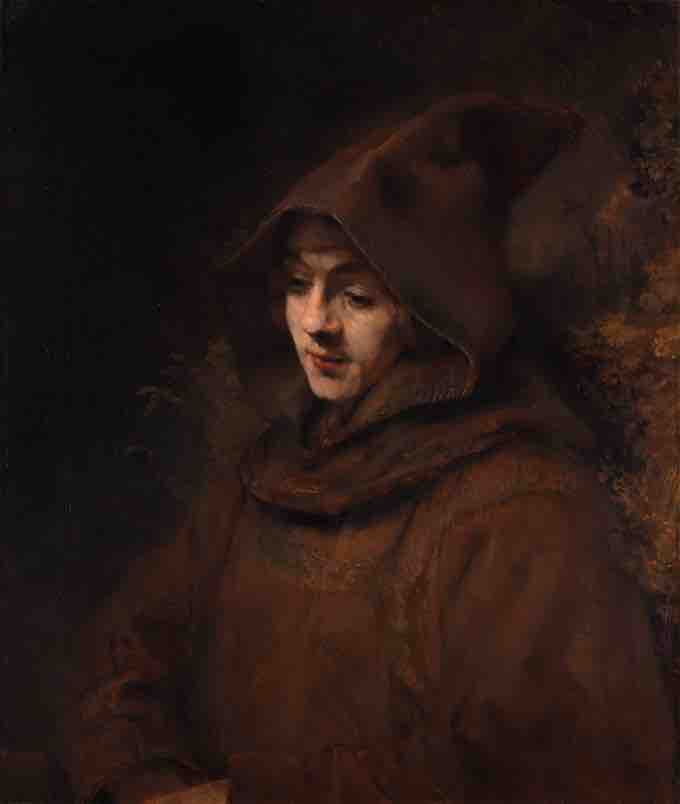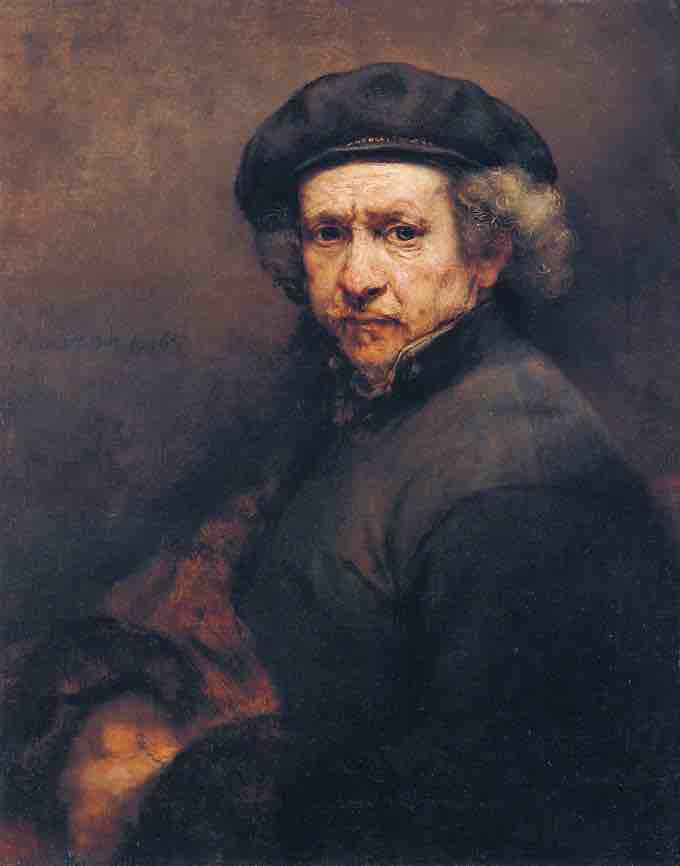Overview: Rembrandt
Rembrandt Harmenszoon van Rijn (1606—1669) was a Dutch painter and etcher during the Dutch Golden Age, a period of great wealth and cultural achievement. Though Rembrandt's later years were marked by personal tragedy and financial hardship, his etchings and paintings were popular throughout his lifetime, earning him an excellent reputation as an artist and teacher. In 1626, Rembrandt produced his first etchings, the wide dissemination of which would largely account for his international fame.
Characteristics of Rembrandt's Work
Among the more prominent characteristics of Rembrandt's work is his use of chiaroscuro, the theatrical employment of light and shadow. This technique was most likely derived from the Dutch Caravaggisti, followers of the Italian Baroque painter Michelangelo Merisi da Caravaggio who had first used the chiaroscuro technique. Also notable are his dramatic and lively presentation of subjects, devoid of the rigid formality that his contemporaries often displayed, and a visible compassion for the human subject, irrespective of wealth and age.
Throughout his career, Rembrandt took as his primary subjects the themes of portraiture (dependent upon commissions from wealthy patrons for survival), landscape, and narrative painting. For the last, he was especially praised by his contemporaries, who extolled him as a masterly interpreter of biblical stories for his skill in representing emotions and attention to detail. His immediate family often figured prominently in his paintings, many of which had mythical, biblical, or historical themes.

Titus as a Monk by Rembrandt, 1660
Rembrandt's immediate family frequently figured in his paintings. This work features Rembrandt's son Titus as a monk.
In later years, biblical themes were still often depicted, but his emphasis shifted from dramatic group scenes to intimate portrait-like figures (such as in James the Apostle, 1661). In his last years, Rembrandt painted his most deeply reflective self-portraits (he painted 15 from 1652 to 1669) and several moving images of both men and women (such as The Jewish Bride, c. 1666) in love, in life, and before God.
The Jewish Bride, Rijksmuseum in Amsterdam.
In his later years, Rembrandt painted several moving images of both men and women such as this painting of The Jewish Bride.
Stylistically, Rembrandt's paintings progressed from the early "smooth" manner, characterized by fine technique in the portrayal of illusionistic form, to the late "rough" treatment of richly variegated paint surfaces, which allowed for an illusionism of form suggested by the tactile quality of the paint itself. Contemporary accounts sometimes remark disapprovingly of the coarseness of Rembrandt's brushwork, and the artist himself was said to have dissuaded visitors from looking too closely at his paintings. The richly varied handling of paint, deeply layered and often apparently haphazard, suggests form and space in both an illusory and highly individual manner.
Self-Portraiture
Rembrandt's self-portraits trace the progress from an uncertain young man, through the dapper and very successful portrait painter of the 1630s, to the troubled but massively powerful portraits of his old age. Together, they give a remarkably clear picture of the man, his appearance, and his psychological make-up, as revealed by his richly weathered face. In his portraits and self-portraits, he angles the sitter's face in such a way that the ridge of the nose nearly always forms the line of demarcation between brightly illuminated and shadowy areas.
Self-portrait, c. 1629
Rembrandt's earliest self-portraits portray his youthfulness and, sometimes, his uncertainty.

Self-portrait by Rembrandt, 1659
Rembrandt's numerous self-portraits provide a strong record of his development as an artist and offer insight into his personal psychology.